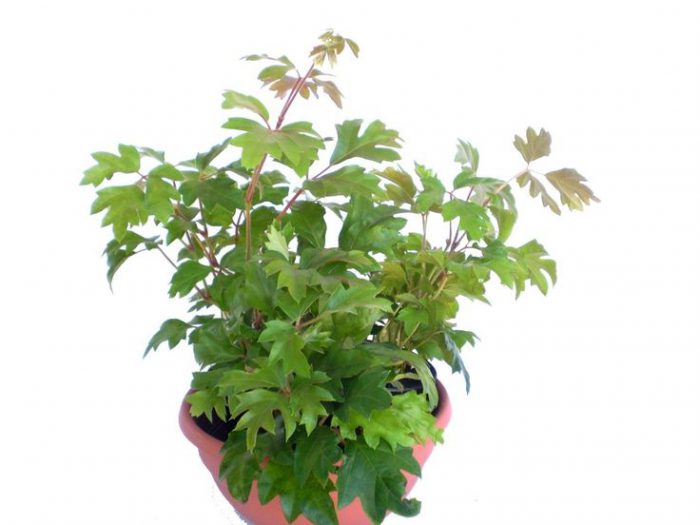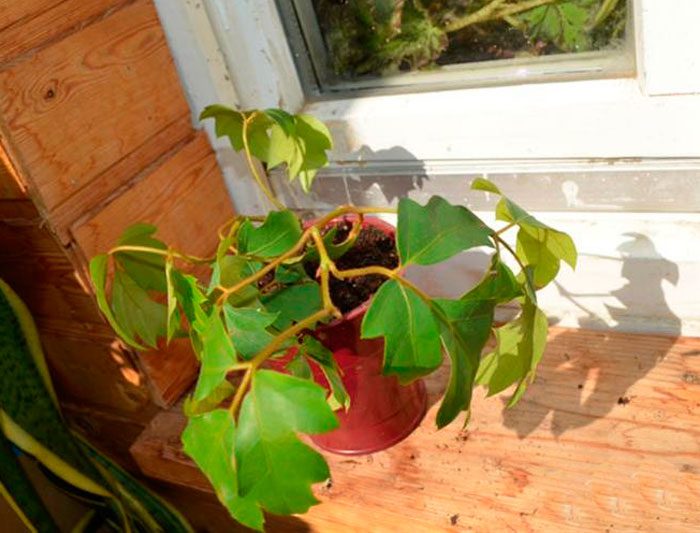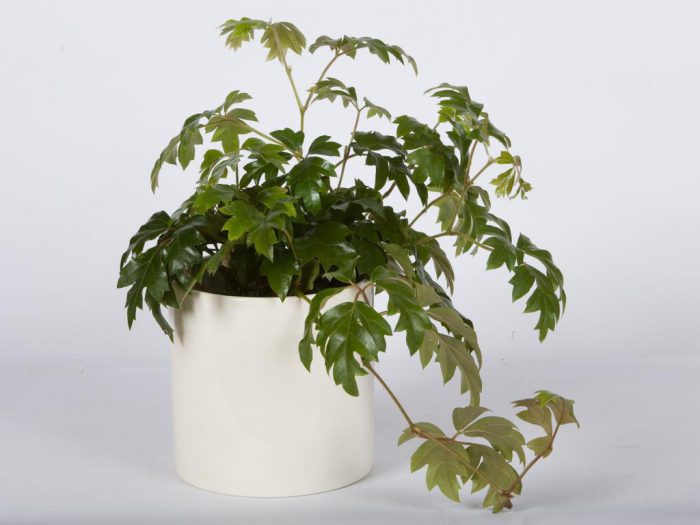Roicissus (Rhoicissus) is an evergreen ornamental deciduous plant. This liana has a very effective appearance. It is directly related to the grape family (Vitaceae) and to the genus Roicissus (Rhoicissus). It brings together more than 10 species of different plants. In nature, the plant is found in the tropical regions of South Africa.
Roicissus is quite popular in indoor floriculture. He is not capricious and undemanding to care for. It can grow in both shaded and sunny locations, and also thrives in cold and warmth. Has simple leaves. Small flowers are collected in umbrellas. But at the same time, the roicissus practically does not bloom at home. It is a fast growing plant that can grow up to 150 centimeters in height.
Content
Rocissus home care
Illumination
It feels best in bright, but with this diffused light. Make sure the foliage is not exposed to direct sunlight, as this can cause the color to fade.
Temperature regime
Feels great at a temperature of 16-25 degrees in the warm season. With the onset of winter, it is recommended to rearrange some types of rocissus in a cool place (from 10 to 12 degrees).
How to water
In the warm season, watering should be abundant. In the autumn-winter period, you need to be especially careful about watering. It is reduced so that the soil dries out a little between watering. It is impossible not to allow the earthen coma to dry out, not to waterlogging, which can lead to the plant dropping the leaves, and its shoots are also crushed and dried out. Also, due to stagnant water in the soil, brown specks appear on the foliage, and mold forms. And because of this, the leaves can curl.
Air humidity
Liana is especially undemanding to the level of humidity. However, it must be borne in mind that dry air leads to the fact that the tips of the leaves begin to dry out. Therefore, it must be sprayed from time to time.
Fertilizer
During intensive growth, which is observed in spring and summer, the plant needs feeding. At the same time, you need to feed it 1 time in 2 or 3 weeks and use complex fertilizer for this. If the plant lacks nutrients, it will begin to grow very slowly.
Transplant features
Roicissus transplant is carried out in spring time 1 time in 2 or 3 years. However, it is necessary to add fresh soil every year.The same vines that grow in the tub are transplanted as the tub itself rots.
Reproduction methods
 There are several ways to propagate such a very spectacular vine. So, for this you can cut off the cuttings or divide the overgrown bush of an adult plant. It can also be grown from seeds.
There are several ways to propagate such a very spectacular vine. So, for this you can cut off the cuttings or divide the overgrown bush of an adult plant. It can also be grown from seeds.
As a rule, the bush is divided in the spring. This procedure is recommended to be carried out simultaneously with the transplant. By the way, you need to use a very sharp knife to divide.
Propagation by cuttings can be carried out year-round, but experienced florists advise doing this in January or February, or in spring. For rooting, cut cuttings are planted in a small pot filled with soil. Moreover, several cuttings can be planted in one container at once, namely, 3 or 4 pieces. It must be placed in a warm place. So, the temperature should always be in the range of 20-22 degrees. After 2.5–3 weeks, the cuttings should have roots. Rooted cuttings must be planted in different containers, which must be filled with a special earth mixture. You can do it yourself, for this you just need to connect the turf, leaf and humus land. Do not forget about a good drainage layer. After the cutting is planted in a separate flower pot, it needs to be watered abundantly, regularly.
Pests and diseases
A spider mite, as well as a scale insect, most often settles on this plant.
A few tips
- In order to form a beautiful bush, you need to pinch the shoots.
- In winter, moldy fungus very often appears on the Rocissus, and it also easily rots during this period.
- It is necessary to rearrange the vine in winter to a place where it will be cool, and also significantly reduce watering. During this period, she has a period of rest.













